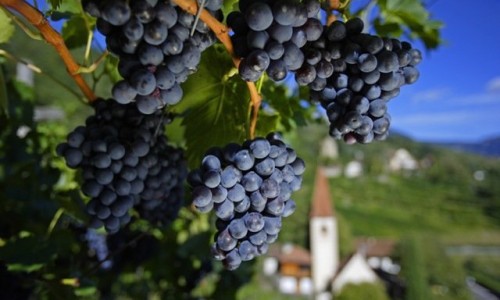





Trentino Alto Adige
|
For many reasons, Trentino-Alto Adige is, historically and culturally speaking, probably the most complicated region in Italy. It stretches out from the massif, which, thanks to the Brenner Pass brings Austria and Italy closer together, and goes south to the landscape that opens south of Trento, where there is a beautiful view of the northern part of the Garda lake. When a person from Northern Europe comes out of the Brenner Pass, it is not immediately obvious that you have arrived in Italy, because many of the road signs are not only in Italian, but also in German. Or rather in Austrian, for Alto Adige is a relatively new part of Italy, incorporated after the peace treaty of 1919, after World War I. In Austrian this area is called Südtirol, and it is often seen on the wine labels. In Italian, the name is Alto Adige, which translates “the upper reaches of the Adige” – the second longest river in Italy. But this is not just a historical curiosity as the Austrian culture is still very much alive in Alto Adige, but it practically disappears when you come into the southern part of the region – Trentino, which has a long history of cultural contact with the rest of the peninsula. What characterizes both parts of the region is the relatively large importance of the viticulture and wine production, where stone fruit cultivation (especially apples) is the closest rival to grapes and wine production. The grape selection is varied including a number of local varieties and quite a few varieties that we would normally refer to as international. This is not really the case here, since white grapes like Chardonnay and Sauvignon Blanc and red varieties such as Merlot and Pinot Noir have been planted centuries ago, when this corner of Italy was still under Austrian rule. Vines enjoy the sunny conditions that usually prevail during the growing season, and there’s often quite a lot of body in the wines (e.g. higher alcohol), but it is almost always paired with a refreshing acidity that gives the wine a delicate balance. Viticulture is carried out mostly by small farmers, and the vinification is often in the hands of cooperatives. In fact Trentino-Alto Adige is home to some of Italy’s best cooperatives. They account for around 80% of wine production in the region. The large majority of the wine, more than 85%, is sold as DOCs, making Trentino-Alto Adige the first region in Italy. The two regional DOCs, Alto Adige and Trentino DOC, are clearly dominant and are often, on the wine label led by the grape variety. But in both the Trentino and Alto Adige provinces you find a small number of independent DOCs. White ‘international’ varieties are prevalent, and oddly enough the local Traminer aromatico (= Gewurztraminer) from Tramin in Alto Adige is not particularly popular. The local red varieties are doing a little better, such as Schiava and Lagrein from the Alto Adige. Or the ‘original’ Trento varieties Marzemino and Teroldego, of which especially the latter seems to have an interesting potential. |
|
||||||||||||||||
